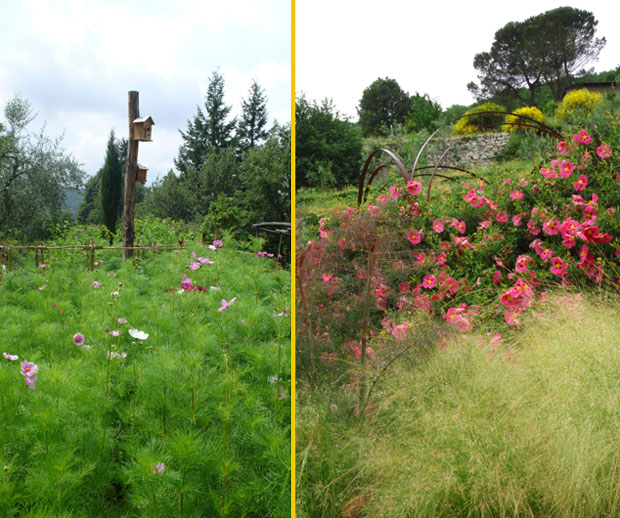Antonio Perazzi prefers to be called a gardener rather than a landscape architect. Professor of landscape architecture and gardens at several Italian universities - including the Politecnico of Milan - and abroad, participated in the most important international exhibitions (the Venice Biennale, the Festival des Jardins de Chaumont sur Loire as the Festival International des Jardins of Métis in Quebec), and has received numerous awards and signed public and private works slightly in the whole world. It's a professional. But counter. Woe to ask the latest trends in garden and even worse to ask what is the style you prefer. Because his answer leaves no room for interpretation: "I do not call myself a fashion victim, not the cloning green walls and can survive without design pieces in my projects, because I chase another modernity that I think much more priority: the ecology and of biodiversity. " A race endangered her? Likely.
What you dreamed of making as a child?
The ethologist. But coming from a family of writers, all that math was impossible for me. My mother insisted on me to be a chef, a job that is very close to mine. Designing a garden is not so different than a chef: they are both very sensory experiences related professions.
Why did you write a book called Against the garden ( along with Pia Pera ed )?
Surely because she was born a friendship with idyllic Pia Pera (my kids call her "Aunt Pear"), then we wanted to protest and to distance themselves from a cunning way to the gardens. We started to exchange our ideas and exchanged many letters, but did not know then that the book was born. The title is provocative. I do not like to treat the plants as if they were ornaments.
What is your poetry?
try to create projects straddling the landscape and garden, respecting the biological dynamics of a natural system larger, which includes many different subjects. I am inspired by the plants and every time I try to make them out to my clients or users of my gardens, because organisms are always surprising.
What interesting those who do not know anything about green?
To understand all the benefits that are derived from a proper life cycle: a orticaio or a bush may be useful. On the contrary, persisting in bonsaizzare plants or waste time behind a fresh lawn cutting and weed-free, it means not to understand that plants and landscape are evolving organisms, which incessantly changing. Who would dream of preventing a child become an adult? Who said that a tree should be pruned to force or a garden always needs an irrigation system?
The most common errors?
Biggest is not to be clear: do not understand what you try to be a green space. A garden is a special place where you can live in contact with nature. For this we must consider the benefits and pleasures are directly proportional to the efforts and thoughts involved in maintaining it. The most beautiful gardens are those who feel gardener (... and people really do this). But do not get discouraged: it takes too much money to achieve amazing gardens.
What are the costs involved?
For a medium sized terrace of about € 10,000, while for a one-hectare garden outside the city 15,000. I do not like, however, give the figures as well, because each case has its own specificity. Maybe for a hectare of land can do a few packets of seeds and a good idea.
Your teachers?
First Konrad Lorenz. Retired when the Nobel Prize for medicine said that fortunately child had a nanny who had him play with earthworms. I really admire Ippolito Pizzetti also because it was the first intellectual of the Italian garden. And how not to mention Gilles Clément , the idol of our years.
Some anecdotes about the author of the Manifesto of the Third landscape?
I had to do a project with Gilles Clément. One summer day we arranged to meet in La Vallée, his home country - indeed, his garden -. Gilles was wearing a tank top with holes, first has fed my dog then looked at me, and told me: "... to make a good project before we have to go for a swim in the lake." I will always remember that swim in the freshwater crayfish and a 'water color tannin tea!
Advice. How and where you can learn the craft?
A premise: Landscape architecture is a matter which to me should be taught in the academies of art, because it is the contemporary art of gardens. For a young suggest going to study at the National School of Landscape of Versailles for the optimal design courses articulated between practical and theoretical experience. I was trained in London, at the at the Kew Gardens and I have a great memory, I would recommend this establishment also no doubt. But the wisest suggestion is also the most obvious: before making the landscape must be gardeners. Knowing the plants, the earth, animals, art history and architecture. They did just that the great masters of the past?



I truly like to reading your post. Thank you so much for taking the time to share such a nice information.
ReplyDeleteexpando